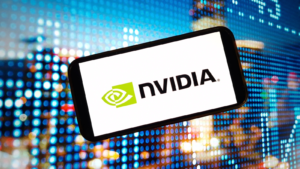Nvidia’s Growth Expectations May Be Too Optimistic

Nvidia’s recent financial results have been nothing short of spectacular, with revenue surging 262% year-over-year to $26 billion in Q1 2025. Analysts are projecting continued hypergrowth, with consensus estimates calling for revenue to reach a staggering $164 billion by fiscal 2026.
However, when you really scrutinize these projections, they start to look quite speculative and risky. Not only are analysts assuming the overall AI industry will be massive and highly profitable, enabling a flood of well-funded AI startups, but they are also counting on Nvidia to maintain its near-monopoly on AI chips and sustain its sky-high margins. Color me skeptical.
I believe it’s unrealistic to expect Nvidia to be able to charge such premium prices for its AI chips indefinitely. Many tech giants like Google (NASDAQ:GOOG, NASDAQ:GOOGL), Amazon (NASDAQ:AMZN), and Microsoft (NASDAQ:MSFT) are already developing their own AI silicon. It simply doesn’t make economic sense for them to keep paying Nvidia’s hefty markups when they have the scale and resources to design chips in-house. If these hyperscalers shift even partially to first-party silicon, it would take a big bite out of Nvidia’s growth story.
Nvidia Faces Rising Competitive Threats

Nvidia currently enjoys a “70% to 95%” share of the AI chip market. But I expect that leadership position to come under serious pressure in the coming years. Rivals Intel (NASDAQ:INTC) and AMD (NASDAQ:AMD) are investing heavily in developing AI chips that could undercut Nvidia’s price. Chinese firms are also eager to challenge Nvidia and capitalize on their government’s push for AI leadership.
As the tech downturn deepens and funding dries up, cost will become a bigger priority for AI startups. Many of these companies may no longer have the luxury of paying Nvidia’s premium prices. Lower-cost alternatives from Intel, AMD, and others could siphon away significant share, especially at the low end of the market. Nvidia will likely maintain its lead with the largest, most sophisticated customers, but more budget-constrained buyers will be inclined to go with cheaper options.
The Cyclical Semiconductor Slump Looms Large
Semiconductors are a highly cyclical industry, and the current downturn has the potential to hit Nvidia hard. We’re already seeing signs of this, with Nvidia reportedly delaying the launch of its next-gen Blackwell AI chip by several months due to design issues. The company is also facing rising antitrust scrutiny that could constrain its growth and margins.
If the tech recession fears worsen and AI investment cools, Nvidia’s near-term results could severely disappoint relative to Wall Street’s lofty expectations. Analysts are currently projecting 97% revenue growth and 109.6% EPS growth for fiscal 2025, which leaves little room for error. Any hiccups in the Blackwell ramp or a sharper-than-expected slowdown in customer demand could spark a painful reset of those estimates.
Should You Buy Nvidia Stock?

Despite my near-term caution, I remain a long-term Nvidia bull. Over the next decade, I expect artificial intelligence to hit every industry and create trillions of dollars in economic value. Nvidia’s chips and software will be critical enablers of that. The company’s ecosystem is unmatched and still quite ahead of its competition.
However, I believe investors should wait for a better entry point at Nvidia’s current nosebleed valuation. The average analyst price target of $144 implies a 44% upside from here. However, with rising competitive and macro risks on the horizon, Nvidia’s growth is likely to decelerate in the coming quarters. That could lead to multiple compressions and a much more attractive buying opportunity for long-term investors.
My rating on Nvidia stock is a “Sell” for now. But I’ll be watching closely for signs that the bar has been reset to a more reasonable level. If Nvidia can successfully navigate the near-term headwinds and maintain its AI leadership, its long-term future remains bright. For now, though, I’d rather be safe than sorry.
On the date of publication, the responsible editor did not have (either directly or indirectly) any positions in the securities mentioned in this article.
On the date of publication, Omor Ibne Ehsan did not hold (either directly or indirectly) any positions in the securities mentioned in this article. The opinions expressed in this article are those of the writer, subject to the InvestorPlace.com Publishing Guidelines.
Omor Ibne Ehsan is a writer at InvestorPlace. He is a self-taught investor with a focus on growth and cyclical stocks that have strong fundamentals, value, and long-term potential. He also has an interest in high-risk, high-reward investments such as cryptocurrencies and penny stocks. You can follow him on LinkedIn.
